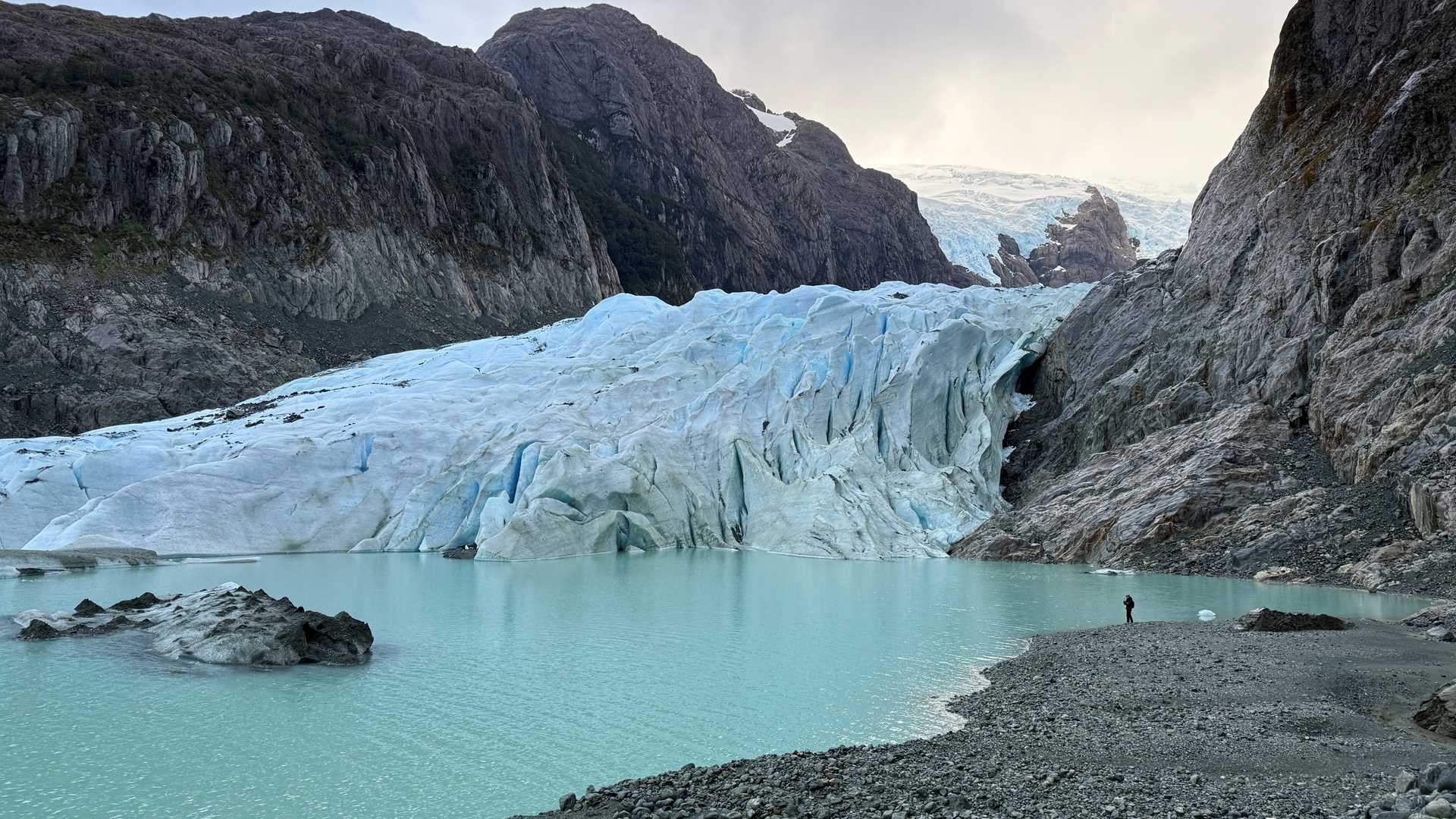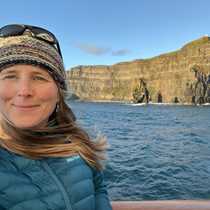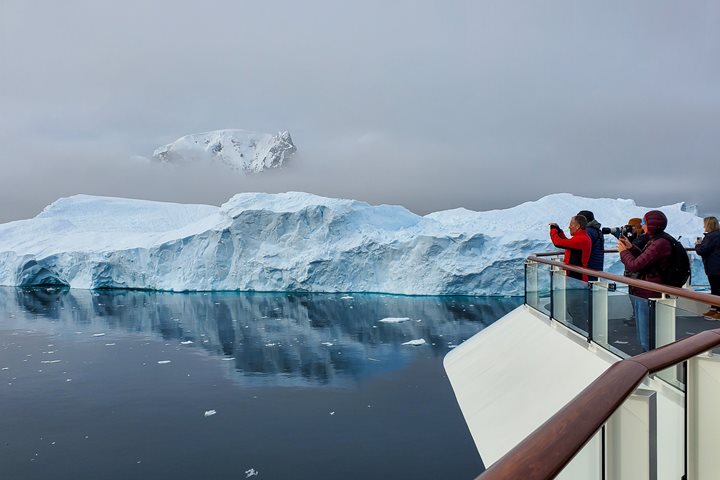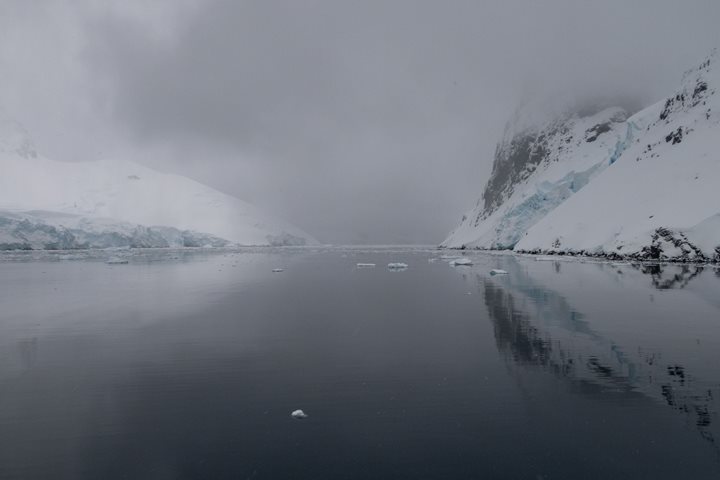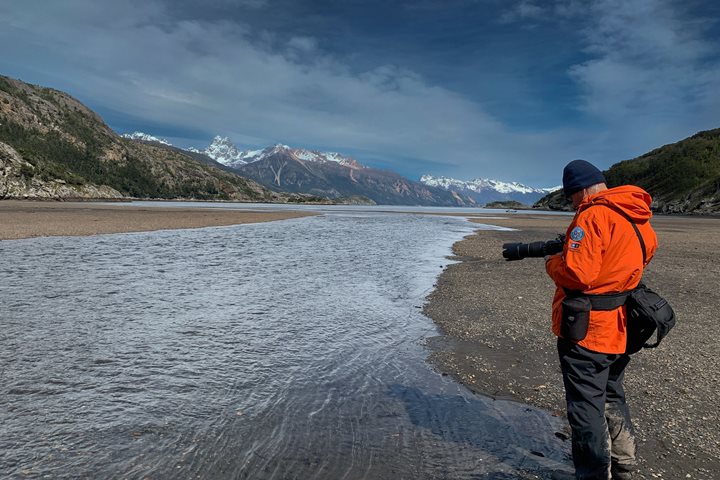We were up before sunrise this morning to watch the pink glow as it descended over the mountains and glaciers around us. A short hike brought us to the foot of Bernal Glacier just when the colors were at their most brilliant. We had a second opportunity to stand in awe as we contemplated the sheer power of ice needed to carve this beautiful landscape. Back on board, we stretched our minds in an abstract direction with a workshop on the use of watercolor to document our expedition from Naturalist Shannon Malone. Our timing was planned around our passage through the Kirke Narrows. We needed to pass through at slack tide to navigate the strait, which is barely three times the width of National Geographic Explorer.
- Daily Expedition Reports
- 07 Mar 2025
Bernal Glacier and Kirke Narrows, 3/7/2025, National Geographic Explorer
- Aboard the National Geographic Explorer
- Antarctica
Gail Ashton, Undersea Specialist
With a bachelor's degree in Marine Biology and Biological Oceanography from Swansea University, Wales, and a Ph.D. in Marine Ecology from the University of Aberdeen, Scotland, Gail is dedicated to investigating marine biodiversity and exploring the w...
Read MoreShare Report
Antarctica and Patagonia: Legendary Ice and Epic Fjords
VIEW ITINERARYRelated Reports
11/14/2021
Read
National Geographic Explorer
LeMaire Channel and Pleneau Island
Morning began early on National Geographic Explorer with a beautiful cruise through the LeMaire channel. As the ship passed beyond the southern end of the channel, it was surrounded by ice with spectacular views of sea ice and icebergs. The Zodiacs were soon lowered to take everyone ashore at Pleneau Island for up close encounters with penguins. In the afternoon, Zodiacs zipped around grounded icebergs as everyone was treated to a cruise through monumental ice sculptures created by glaciers. The day ended as it began, with a trip through the always awe-inspiring LeMaire channel.
11/9/2021
Read
National Geographic Explorer
Jackson Bay, Karukinka Natural Park & Canal San Gabriel
During a rare, perfectly still and windless morning, we landed at Jackson Bay, in Admiralty Sound to visit the most remote section of Karukinka Natural Park, a private protected area managed by the Wildlife Conservation Society. At 330 hectares, this area protects some of the southernmost forests, grasslands and peatlands of the planet together with a vast array of wildlife including several endemic bird species and a colony of breeding elephant seals. We hiked through large stands of primeval forest to get to a waterfall that drains the overflow of some alpine glaciers still blanketing the peaks that flank the valley we walked toward.

